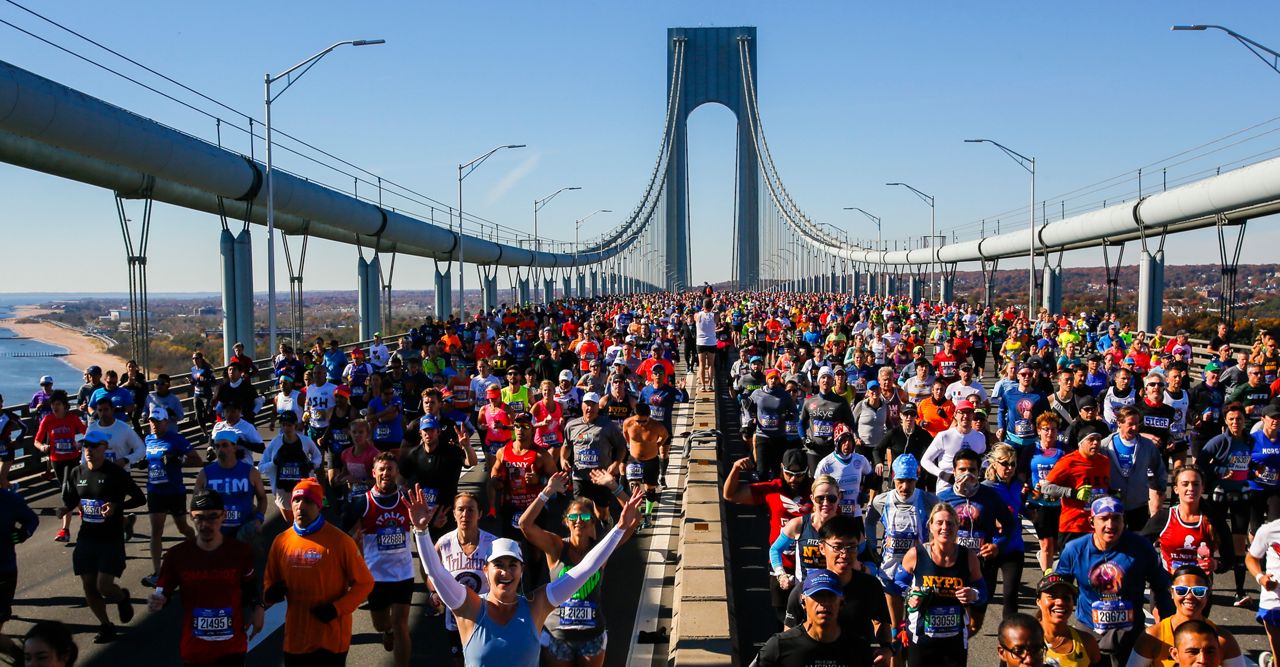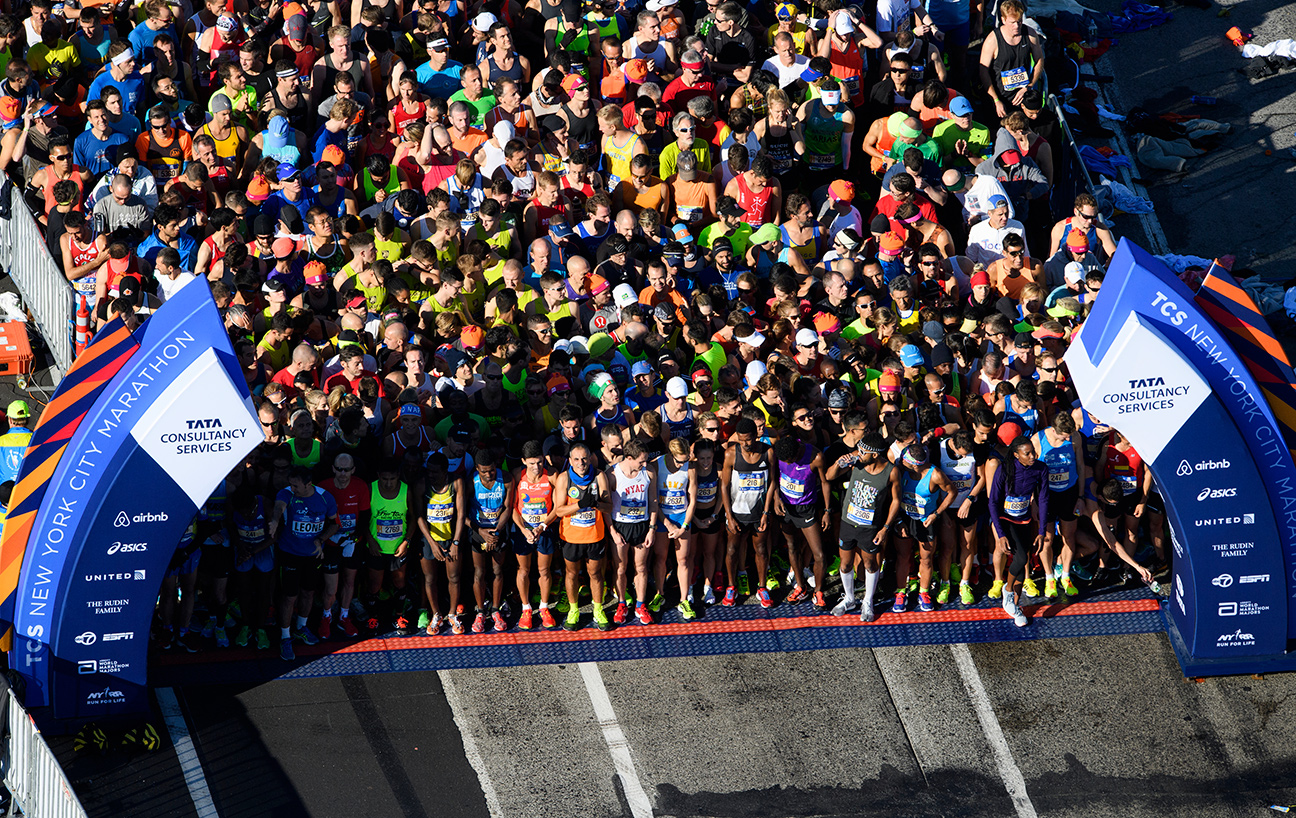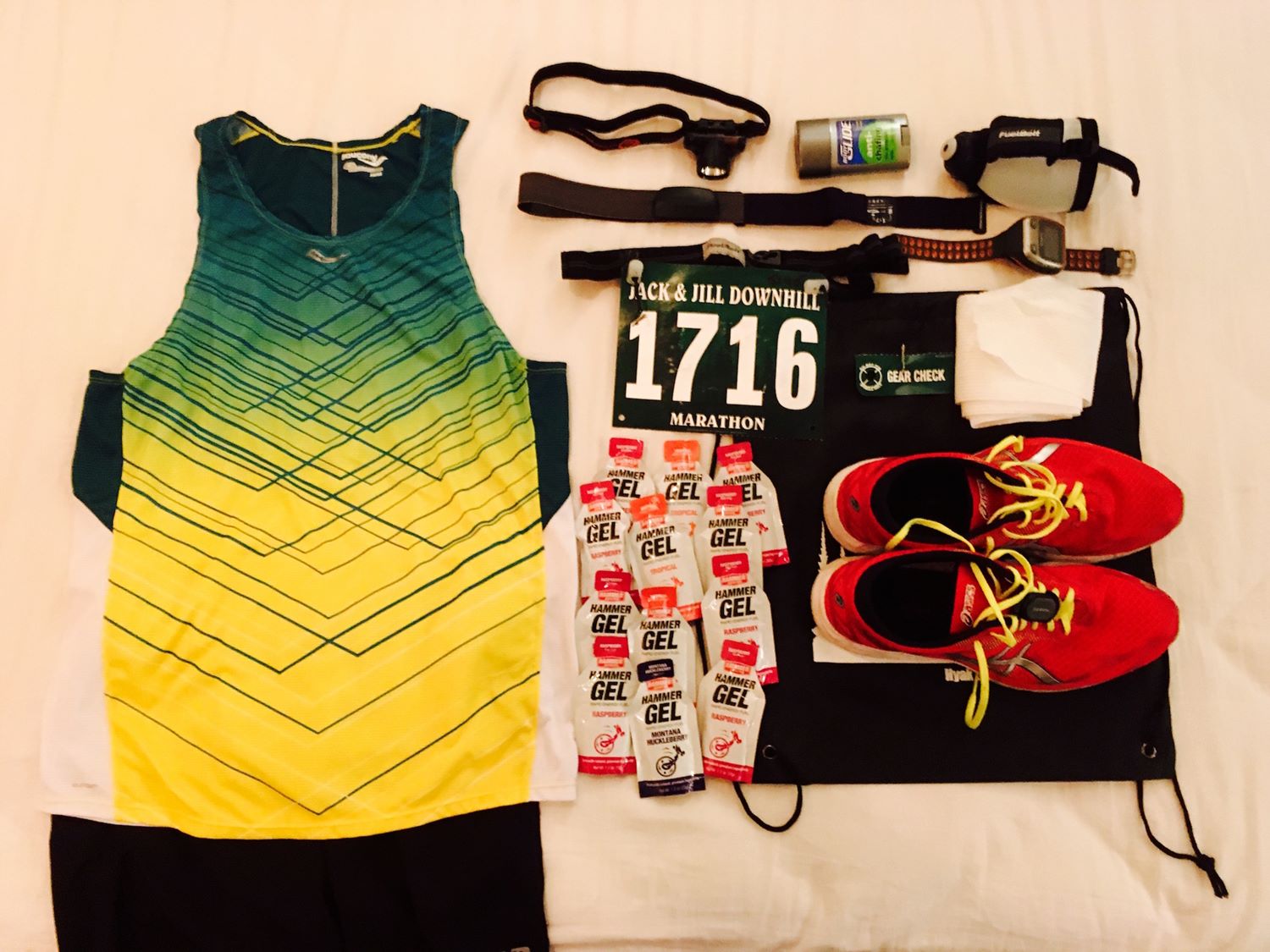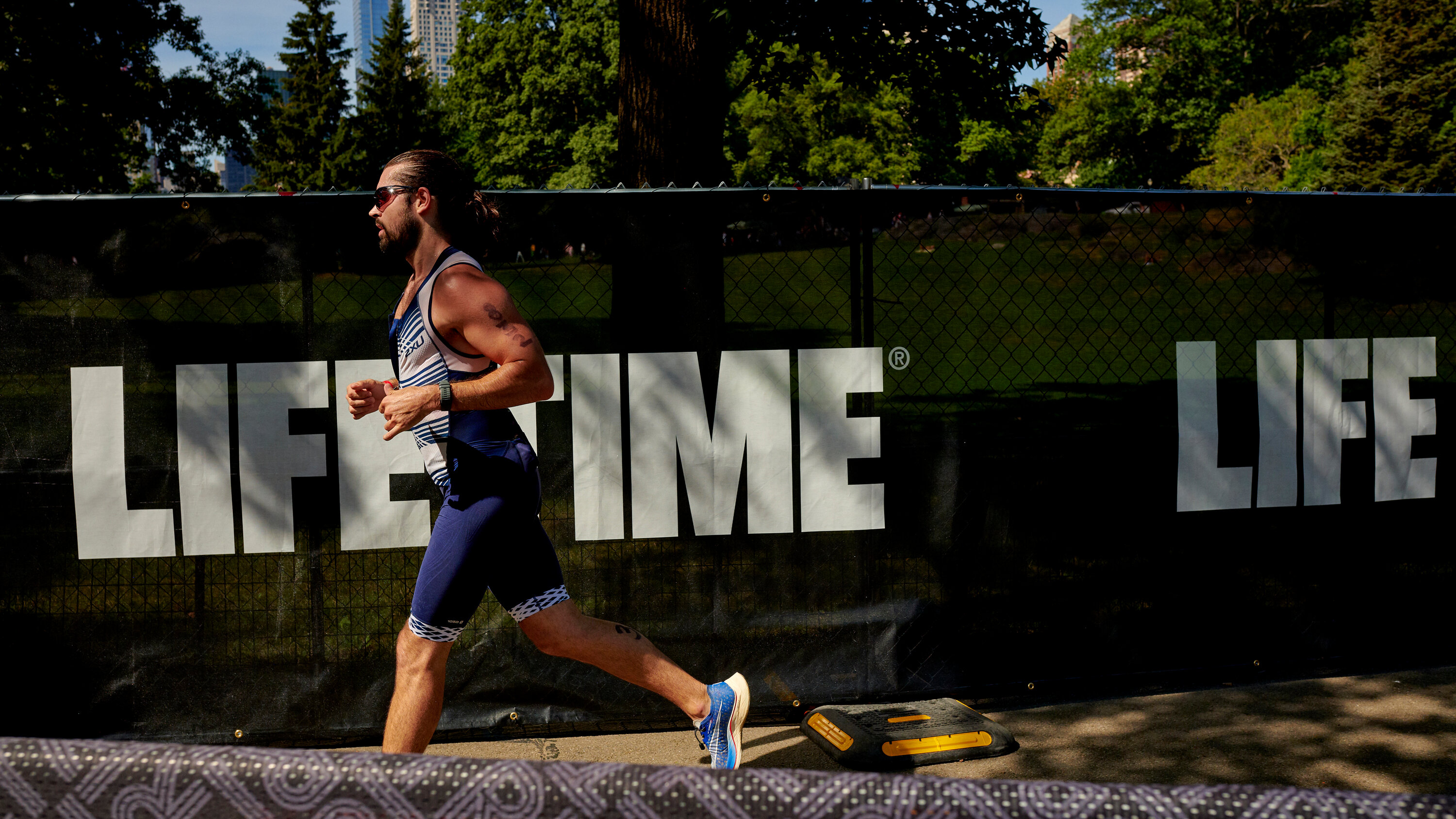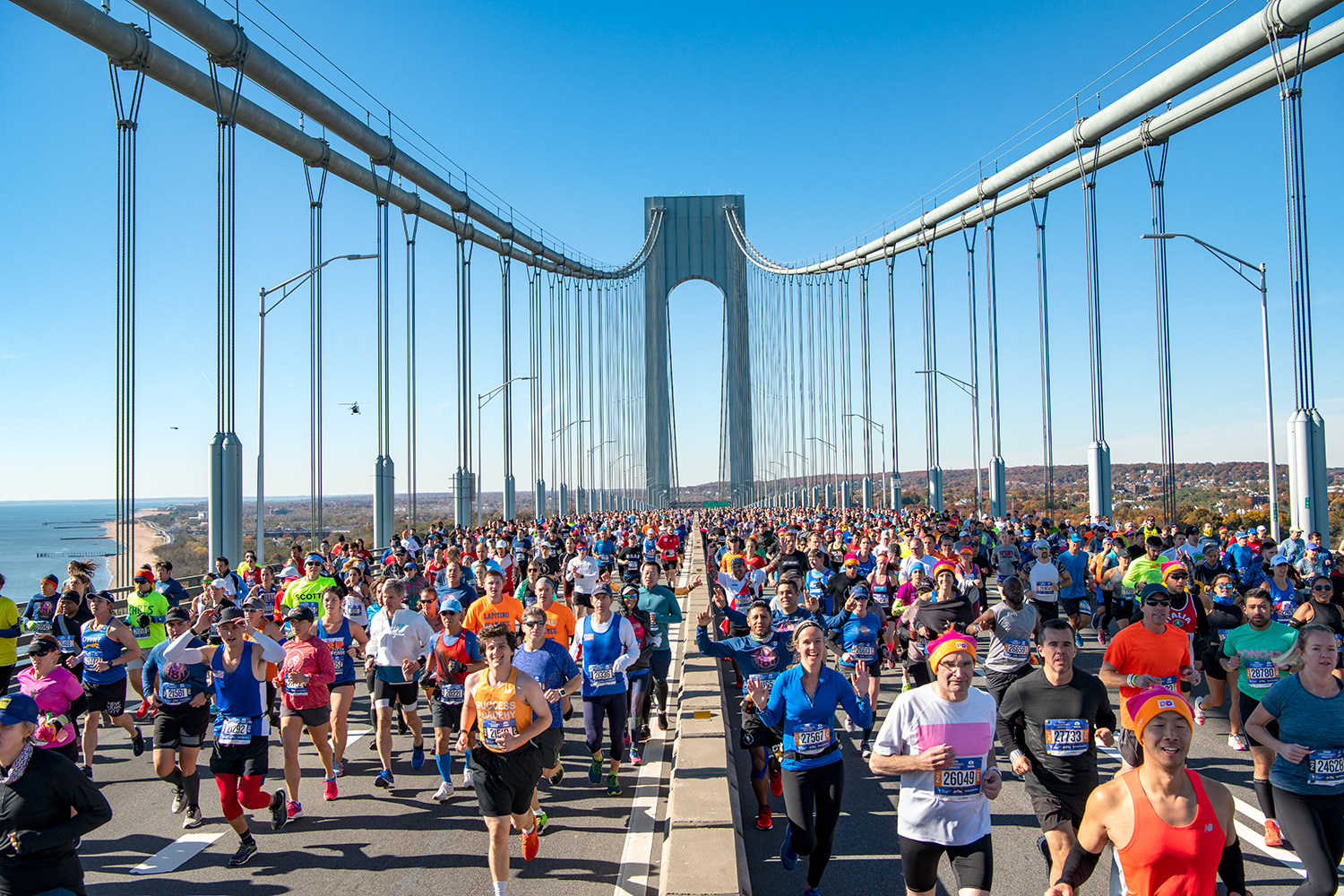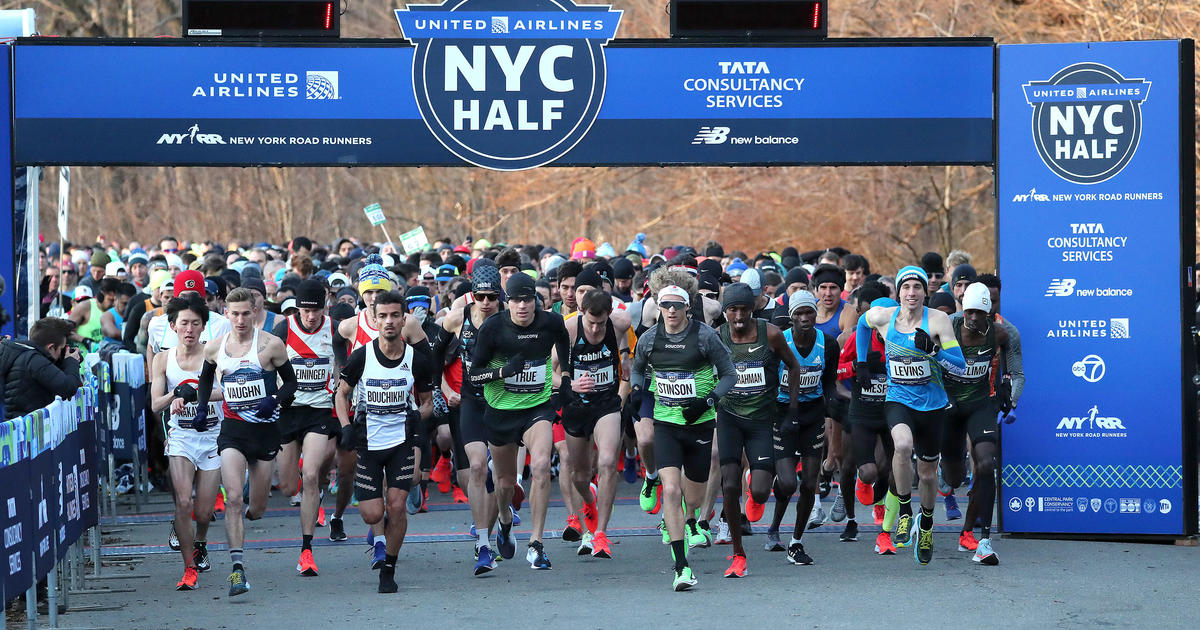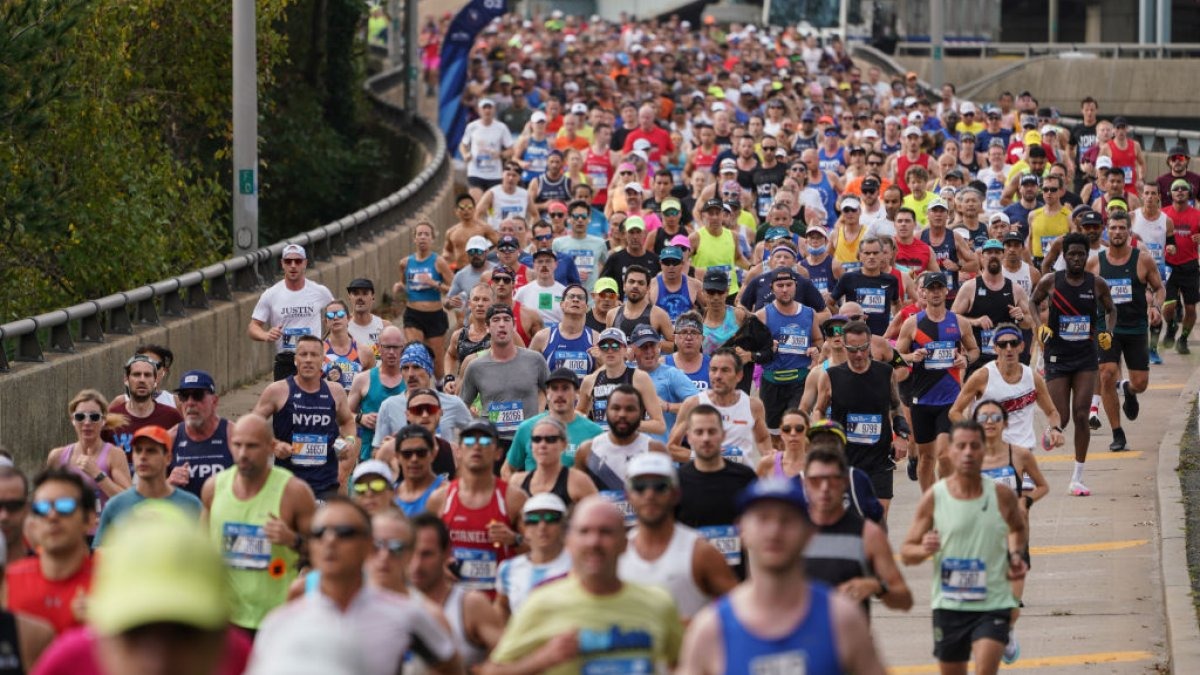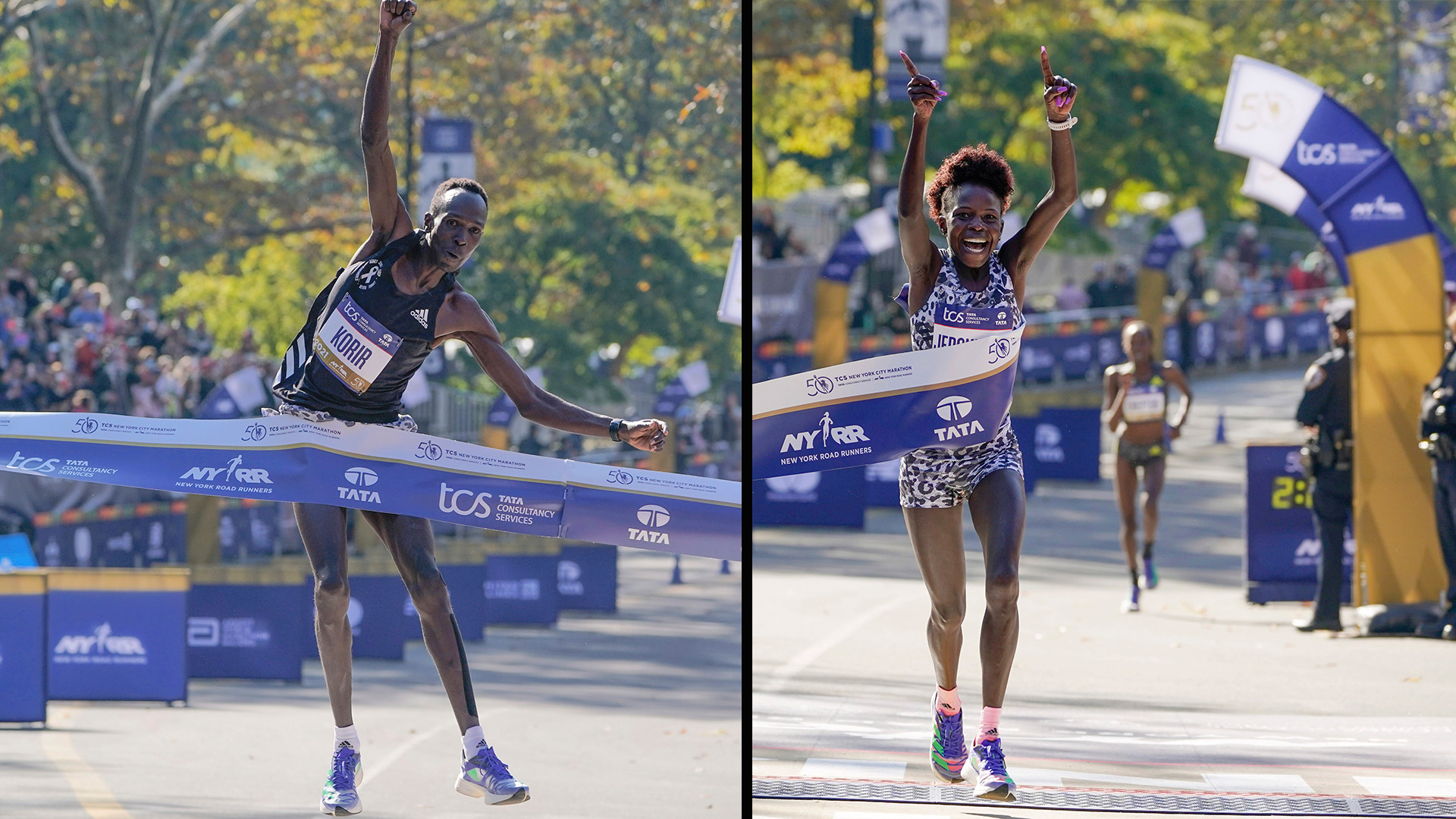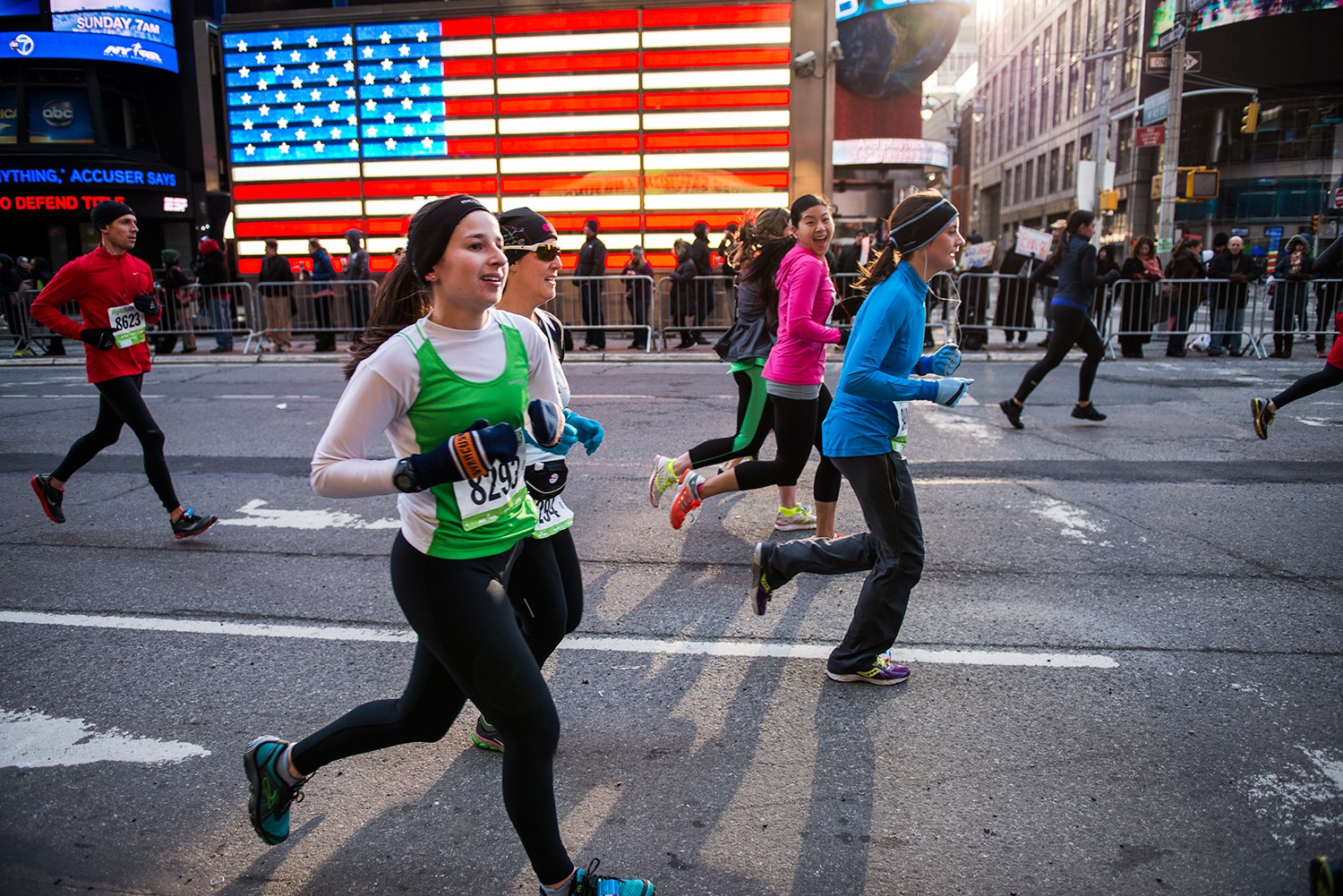

Featured
How To Run In The NYC Marathon
Modified: January 2, 2024
Learn how to participate in the prestigious NYC Marathon and be featured among the elite runners. Follow our guide to successfully run in the iconic race!
Introduction
Are you ready to take on the challenge of running in the prestigious New York City Marathon? Whether you’re an experienced runner or a beginner, participating in the NYC Marathon is an exhilarating experience that will test your endurance, determination, and commitment to achieving your goals.
With its iconic course that weaves through all five boroughs of New York City, this marathon is not only physically demanding but also offers a unique opportunity to immerse yourself in the vibrant energy and diverse culture of the city. Crossing the finish line in Central Park is a momentous achievement that will leave you with a sense of accomplishment like no other.
But to successfully complete the NYC Marathon, proper training and preparation are essential. In this comprehensive guide, we will walk you through the necessary steps to train effectively, build endurance, prevent injuries, and mentally prepare for the big race day. So, lace up your running shoes and let’s dive into the world of marathon training!
Before we get started, it’s important to note that each person’s running journey is unique, and what works for one individual may not work for another. The tips and recommendations provided here are general guidelines to help you along your marathon training journey. Feel free to adapt and adjust them based on your personal preferences, fitness level, and any advice provided by your healthcare professional or coach.
Now, let’s begin our journey towards running in the NYC Marathon. Whether it’s your first marathon or you’re a seasoned runner aiming for a personal best, this guide will equip you with the knowledge and tools you need to make your marathon experience a memorable and fulfilling one.
Training for the NYC Marathon
Training for the New York City Marathon requires a structured approach to gradually build your endurance, improve your running pace, and prepare your body for the demands of a 26.2-mile race. Whether you’re an experienced runner or just starting out, following a training schedule tailored to your fitness level and goals is crucial for success.
First and foremost, it’s important to establish a baseline of fitness before diving into marathon training. If you’re new to running or haven’t been active for a while, it’s advisable to start with a foundation-building phase. Focus on developing a consistent running routine, gradually increasing your mileage, and getting your body accustomed to the physical demands of running.
Once you have a few weeks of regular running under your belt, it’s time to begin a more structured marathon training program. This typically involves a combination of long runs, tempo runs, speed workouts, and cross-training to improve your overall strength and fitness.
Long runs are a cornerstone of marathon training and help to build endurance. Start with a comfortable distance that you can manage, and gradually increase the mileage each week. Aim to complete at least one long run per week, gradually building up to a distance close to or slightly longer than the marathon itself.
Tempo runs are shorter, faster-paced runs that help improve your lactate threshold and overall running speed. During a tempo run, maintain a comfortably hard pace (around 80-90% of your maximum effort) for a sustained period. Incorporate one or two tempo runs into your weekly training schedule to improve your speed and running economy.
Speed workouts, such as intervals and fartleks, involve alternating periods of high-intensity effort with periods of recovery. These workouts help to improve your anaerobic capacity, increase your running speed, and challenge your body to adapt to different exertion levels. Incorporate one or two speed workouts per week, alternating between shorter intervals (e.g., 400m repeats) and longer intervals (e.g., 800m or 1k repeats).
Cross-training is another essential component of marathon training. Engaging in activities like cycling, swimming, or strength training can help to improve your overall fitness, prevent overuse injuries, and provide a mental break from running. Aim to incorporate cross-training activities into your schedule at least once or twice a week.
Finally, rest and recovery are just as important as the training itself. Make sure to incorporate rest days into your schedule to allow your body to recover and rebuild. Listen to your body and be mindful of any signs of fatigue or overtraining. Remember, quality training is just as important as quantity.
As you progress through your marathon training, don’t be discouraged by setbacks or challenges. Every runner faces obstacles along the way. Stay motivated, stay consistent, and trust the process. With dedication, perseverance, and a well-rounded training plan, you’ll be ready to conquer the streets of New York City on marathon day.
Creating a Training Schedule
One of the key elements of successful marathon training is creating a well-structured training schedule that balances workload and recovery. A training schedule serves as a roadmap for your training journey, keeping you organized and accountable for your workouts. Here’s how to create an effective training schedule for the NYC Marathon:
1. Assess Your Current Fitness Level: Before creating a training schedule, it’s important to assess your current fitness level and running capabilities. This will help you determine where to start and set realistic goals for the marathon.
2. Set Your Goals: Define your goals for the marathon – whether it’s simply finishing the race, achieving a specific time, or qualifying for future events. Your goals will influence the structure and intensity of your training schedule.
3. Determine Your Available Time: Evaluate your weekly schedule and determine how many days per week you can dedicate to training. Consider your work, family, and personal commitments to ensure you have enough time for both running and recovery.
4. Plan Your Mileage Progression: Map out your long runs and weekly mileage progression throughout your training. Start with a conservative mileage that matches your current fitness level, and gradually increase it over time. Aim for a weekly increase of 10-15% in mileage.
5. Incorporate Recovery Days: Schedule regular rest days and recovery weeks throughout your training to allow your body to adapt and prevent overuse injuries. Recovery days can include easy runs, cross-training activities, or complete rest.
6. Include Different Types of Runs: Your training schedule should include a mix of long runs, tempo runs, speed workouts, and easy runs. Varying the intensity and duration of your runs will help improve different aspects of your running performance.
7. Consider Cross-Training: Include cross-training activities like cycling, swimming, or strength training to improve overall fitness, prevent injuries, and give your body a break from running.
8. Be Flexible and Listen to Your Body: It’s important to be flexible with your training schedule and make adjustments as needed. Listen to your body and take extra rest days or modify workouts if you’re feeling fatigued or experiencing any pain or discomfort.
9. Track Your Progress: Keep a training log or use a running app to track your workouts and monitor your progress. This will help you stay motivated, analyze your performance, and make informed adjustments to your training schedule if necessary.
Remember, a training schedule is a guide, not a rigid set of rules. Be adaptable and make adjustments as needed. It’s better to prioritize rest and recovery than to risk injury by pushing yourself too hard. With a well-designed training schedule, you’ll build the necessary endurance and confidence to conquer the NYC Marathon.
Building Endurance
Building endurance is a critical aspect of marathon training. Endurance refers to your body’s ability to sustain effort over a prolonged period. By developing your endurance, you’ll be able to maintain a steady pace throughout the entirety of the NYC Marathon. Here are some strategies to help you build endurance:
1. Long Runs: Long runs are the foundation for building endurance. Start with a comfortable distance that challenges you but is still manageable. Gradually increase the mileage of your long runs each week, aiming to reach a distance that is close to or slightly longer than the marathon distance itself. These long runs will condition your body to endure longer periods of exercise and improve your mental stamina.
2. Gradual Mileage Increase: When increasing your mileage, do so gradually. Avoid sudden jumps in distance, as this can increase the risk of injury. Aim for a weekly increase of 10-15% in mileage. This progressive approach allows your body to adapt to the demands of longer runs, minimizing the risk of overuse injuries.
3. Tempo Runs: Tempo runs are shorter, faster-paced runs that challenge your cardiovascular system and build your lactate threshold. During a tempo run, maintain a comfortably hard pace (around 80-90% of your maximum effort) for a sustained period. These runs teach your body to sustain a faster pace for an extended period, improving your endurance and efficiency.
4. Hill Training: Incorporating hill workouts into your training is an effective way to build endurance and strength. Running uphill engages different muscle groups and increases your cardiovascular output. Start with shorter hill repeats and gradually increase both the incline and the length of the repeats. Hill training not only improves your endurance but also helps to prevent monotony in your training routine.
5. Consistent Training: Consistency is key to building endurance. Stick to your training schedule, ensuring that you complete your runs as planned. Consistent training helps to gradually strengthen your cardiovascular system and build up your endurance over time.
6. Practice Negative Splits: Negative splits involve running the second half of a workout or race faster than the first half. Practicing negative splits in your training runs helps you develop the mental and physical ability to finish the race strong. By starting at a slightly slower pace and gradually increasing your speed, you’ll improve your endurance and finish with energy to spare.
7. Cross-Training: Supplement your running with cross-training activities like swimming, cycling, or elliptical workouts. Cross-training provides a low-impact alternative to running while still improving cardiovascular fitness and endurance. It also helps to prevent overuse injuries by giving your body a break from the repetitive impact of running.
Remember, building endurance takes time and patience. Be consistent, gradually increase your mileage, and incorporate a variety of training strategies into your routine. By focusing on building your endurance, you’ll be better prepared to tackle the challenging distance of the NYC Marathon.
Incorporating Speed Workouts
Incorporating speed workouts into your marathon training is essential to improve your running pace, build strength, and enhance your overall performance. Speed workouts involve running at faster speeds than your usual training pace, challenging your body to adapt to higher intensities. Here are some tips on how to incorporate speed workouts effectively:
1. Interval Training: Interval training involves alternating periods of high-intensity effort with periods of active recovery. Start with shorter intervals, such as 400 meters or 800 meters, and gradually increase the length as your fitness improves. Run at a fast pace during the interval, aiming to maintain a constant speed. Allow yourself enough recovery time between intervals to catch your breath and reduce fatigue.
2. Fartlek Training: Fartlek, which means “speed play” in Swedish, involves mixing bursts of speed with periods of slower running. During a fartlek run, choose landmarks like trees, lampposts, or signs as your prompts to increase your pace. Run at a faster speed to reach the landmark and then slow down to recover. This type of unstructured speed workout adds variety to your training and improves your ability to adjust your pace during a race.
3. Hill Repeats: Running uphill not only builds strength but also helps enhance your speed. Find a hill with a moderate slope and sprint up it at a challenging pace. Jog or walk back down to recover, and repeat the process several times. Hill repeats improve your leg strength, develop power, and simulate the demands of inclines in a race course.
4. Track Workouts: If you have access to a track, it can be an excellent venue for speed workouts. Perform intervals at specific distances, such as 400 meters or 800 meters, aiming for consistent speeds throughout. The flat and measured surface of a track allows you to monitor your progress and pace accurately.
5. Tempo Runs: Although tempo runs are primarily focused on building endurance, they also improve your speed and race pace. Tempo runs should be done at a comfortably hard pace, where you can still hold a conversation but are pushing yourself. They teach you to sustain a faster pace over longer distances, train your body to eliminate waste products efficiently, and improve your lactate threshold.
6. Incorporate Speed Workouts Strategically: Integrate speed workouts into your training schedule strategically, allowing enough time for recovery between sessions. Aim for one or two speed workouts per week, depending on your fitness level and goals. Be mindful not to overload your training with too many intense workouts, as it can increase the risk of overuse injuries and burnout.
7. Warm-Up and Cool-Down: Before diving into any speed workout, ensure you warm up properly with dynamic stretches, easy jogging, or strides. A warm-up prepares your muscles for the demands of intense running. Similarly, don’t forget to cool down after your speed workout with a gradual decrease in pace and static stretching to aid in recovery and reduce muscle soreness.
Remember that speed workouts are challenging and require a gradual progression based on your fitness level. Start with shorter intervals or slower paces and gradually increase the intensity as your body adapts. Always listen to your body, stay hydrated, and be mindful of any signs of excessive fatigue or injury. Incorporating speed workouts into your training will help you improve your speed, race with confidence, and achieve your goals in the NYC Marathon.
Strengthening and Cross-Training Exercises
When training for the NYC Marathon, it’s important to incorporate strengthening and cross-training exercises into your routine. These activities help improve overall fitness, prevent injuries, and enhance your running performance. Here are some key exercises to consider:
1. Strength Training: Incorporate strength training exercises to improve muscular strength, stability, and endurance. Focus on exercises that target your lower body, core, and upper body. Squats, lunges, deadlifts, planks, and push-ups are all great options. Aim for two to three strength training sessions per week, gradually increasing the intensity and resistance as you progress. Remember to use proper form and technique to maximize the benefits of each exercise.
2. Core Exercises: A strong core is essential for maintaining good running form, stability, and balance. Include exercises that target your abdominal muscles, lower back, and hips, such as planks, Russian twists, bicycle crunches, and bridges. Performing these exercises regularly will help improve your posture, increase your power output, and reduce the risk of injuries.
3. Plyometric Exercises: Plyometric exercises are explosive movements that improve your power and speed. Incorporate exercises like box jumps, squat jumps, lateral bounds, and skipping to enhance your running economy and stride power. Start with proper form and gradually increase the intensity and speed as you become more comfortable with the movements.
4. Yoga and Pilates: Practicing yoga or Pilates can help improve flexibility, balance, and body awareness. These activities also help alleviate muscle tightness and promote relaxation. Include gentle yoga flows, stretching routines, or Pilates sessions in your training schedule to aid in recovery and prevent muscle imbalances.
5. Cross-Training Activities: Engage in cross-training activities to supplement your running and improve overall fitness. Cycling, swimming, rowing, or using an elliptical machine are low-impact options that provide cardiovascular conditioning without putting excessive stress on your joints. They also help maintain aerobic fitness while giving your legs a break from the repetitive pounding of running.
6. Foam Rolling and Recovery Exercises: Recovery is an essential part of any training program. Incorporate foam rolling, stretching, and mobility exercises to promote muscle recovery and prevent tightness. Spend time targeting specific areas like your calves, quads, IT bands, and glutes. Incorporating these exercises into your post-run routine will aid in muscle recovery, reduce soreness, and improve overall performance.
7. Listen to Your Body: Pay attention to how your body feels during and after each exercise session. If you experience pain or discomfort, modify the exercises or seek guidance from a healthcare professional. It’s essential to prioritize injury prevention and ensure you have a well-rounded approach to your training.
Remember, a balanced approach to training includes not only running but also strengthening and cross-training exercises. By incorporating these activities, you’ll build strength, improve flexibility, prevent injuries, and enhance your overall performance in the NYC Marathon.
Nutrition and Hydration Tips
Proper nutrition and hydration are vital components of marathon training. Fueling your body with the right nutrients and staying adequately hydrated ensure optimal performance, improve recovery, and minimize the risk of fatigue and muscle cramps. Here are some nutrition and hydration tips to keep in mind:
1. Fuel for Performance: Prioritize a well-balanced diet that includes a variety of whole foods to meet your energy needs. Focus on consuming complex carbohydrates (such as whole grains, fruits, and vegetables) for sustained energy, lean proteins (like poultry, fish, and legumes) for muscle repair and recovery, and healthy fats (such as avocados and nuts) for overall health.
2. Calorie Intake: Adjust your calorie intake based on your training intensity and duration. As your mileage increases, so does your energy expenditure. Listen to your body’s hunger and fullness cues, and aim to consume enough calories to support your training without excessive weight gain or loss.
3. Pre-Run Nutrition: Eat a balanced meal that includes carbohydrates, protein, and some healthy fats 2-3 hours before a long run or race. This meal should be easily digestible and low in fiber to prevent gastrointestinal issues. Experiment with different foods and timing to find what works best for your body.
4. Hydration: Stay properly hydrated throughout the day, not just during your runs. Drink water regularly to maintain hydration levels. Aim for a minimum of 8 cups (64 ounces) of water daily, or adjust based on your personal needs and sweat rate. Consider using a reusable water bottle to easily track your water intake.
5. Electrolyte Balance: During longer runs or hot weather conditions, replenish electrolytes lost through sweat. Electrolytes play a crucial role in maintaining fluid balance, muscle function, and preventing muscle cramps. Sports drinks or electrolyte tablets can help replenish these essential minerals. However, be mindful of added sugars in sports drinks and read labels carefully.
6. Recovery Nutrition: After a run, consume a combination of carbohydrates and protein within 30 minutes to maximize muscle glycogen replenishment and promote muscle repair. Aim for a 3:1 or 4:1 ratio of carbohydrates to protein. Recovery snacks could include a banana with almond butter, Greek yogurt with fruits, or a protein smoothie.
7. Practice During Training Runs: Use your long runs and training runs to practice your race-day nutrition strategy. Experiment with different foods, gels, or energy bars to find what works best for your stomach and provides sustained energy. Avoid trying new foods on race day to minimize the risk of digestive issues.
8. Listen to Your Body: Every runner is different, and individual nutrition needs may vary. Listen to your body’s cues and adjust your nutrition and hydration accordingly. Monitor your performance, energy levels, and recovery to make informed decisions about your diet and hydration strategy.
Remember, nutrition and hydration are ongoing efforts, not just something to focus on during the race itself. Consistency and adherence to a well-balanced diet will support your training, optimize performance, and help you conquer the NYC Marathon.
Injury Prevention and Recovery
When training for the NYC Marathon, prioritizing injury prevention and implementing proper recovery strategies are crucial. Running long distances and increasing mileage can put stress on your body, making it more susceptible to injuries. Here are some tips to help you stay injury-free and recover effectively:
1. Warm-Up and Cool-Down: Prior to every run, dedicate time to warm-up exercises such as light jogging, dynamic stretches, or strides. This prepares your muscles, tendons, and joints for the demands of running. Similarly, perform a cool-down routine after each run, including static stretching, foam rolling, or gentle yoga poses to aid recovery and reduce muscle soreness.
2. Listen to Your Body: Pay attention to any signs of pain, discomfort, or fatigue. It’s essential to differentiate between normal muscle soreness and potential injuries. If you experience persistent or worsening pain, adjust your training or seek guidance from a healthcare professional to prevent further damage.
3. Proper Footwear: Invest in a good pair of running shoes that provide adequate support, cushioning, and comfort. Get fitted at a specialty running store to ensure you choose the right type of shoe for your foot mechanics and running style. Replace your shoes regularly as they wear out to maintain proper support and reduce the risk of overuse injuries.
4. Cross-Training: Incorporate cross-training activities like swimming, cycling, or strength training to provide a break from running while still maintaining fitness. Cross-training improves overall strength, flexibility, and cardiovascular fitness, while reducing the repetitive strain on your running muscles.
5. Strength and Stability Exercises: Include exercises that target your core, hips, glutes, and lower body in your training routine. Strengthening these areas helps maintain proper running form and reduces the risk of common running injuries, such as IT band syndrome or knee pain. Exercises like lunges, squats, clamshells, and planks are effective for building strength and stability.
6. Rest and Recovery: Allow adequate rest days in your training schedule to give your body time to recover and repair. Rest is just as important as training because it allows your muscles to rebuild and adapt to the stress from running, reducing the risk of overuse injuries. Prioritize quality sleep, as it plays a crucial role in the recovery process.
7. Nutrition for Recovery: Proper nutrition plays a significant role in recovering from training and preventing injuries. Consume a well-balanced diet that includes a mix of carbohydrates, proteins, and healthy fats. Prioritize foods that have anti-inflammatory properties, such as fruits, vegetables, and omega-3 fatty acids, to aid in recovery and reduce inflammation.
8. Listen to Professional Advice: Seek guidance from a healthcare professional or sports therapist if you experience persistent pain, have recurring injuries, or need assistance with injury prevention. They can provide guidance on specific stretches, exercises, or techniques to address any weaknesses or imbalances.
Remember, prevention is always better than cure when it comes to injuries. Prioritizing injury prevention strategies, listening to your body, and taking the necessary steps to recover effectively will help you maintain your training momentum and keep you on track for a successful NYC Marathon experience.
Mental Preparation for Race Day
Preparing yourself mentally for race day is just as important as the physical training you’ve put into preparing for the NYC Marathon. Your mindset plays a crucial role in your ability to push through challenges, stay focused, and maintain a positive attitude during the race. Here are some tips to help you mentally prepare for race day:
1. Visualize Success: Spend time visualizing yourself crossing the finish line, feeling strong and accomplished. Imagine every detail of the race, from the start to the finish, envisioning yourself running smoothly and overcoming any obstacles that come your way. Visualizing success can boost your confidence and reinforce a positive mindset.
2. Set Realistic Goals: Set realistic and achievable goals for the race. It’s essential to have both long-term goals, such as finishing the marathon, and short-term goals, such as setting a personal best time for a specific distance or hitting a certain pace. These goals will give you something to strive for and keep you motivated throughout the race.
3. Positive Self-Talk: Practice positive self-talk leading up to and during the race. Replace negative thoughts and doubts with encouraging and empowering affirmations. Remind yourself of your training, the hard work you’ve put in, and your ability to overcome any challenges that may arise.
4. Focus on Your Strengths: Acknowledge and focus on your strengths as a runner. Reflect on the training sessions where you felt strong and accomplished. Reminding yourself of your abilities and strengths will boost your confidence and help you maintain a positive mindset on race day.
5. Stay Present: During the race, focus on the present moment instead of getting overwhelmed with thoughts about the distance that lies ahead. Break the race down into smaller, manageable segments, focusing on each mile or kilometer at a time. Pay attention to your form, breathing, and the surroundings, keeping yourself engaged in the present moment.
6. Create a Mantra: Develop a personal mantra or phrase that resonates with you. This can serve as a mental anchor during challenging moments in the race. Repeat your mantra silently to yourself when you need an extra boost of motivation or during difficult stretches of the course.
7. Utilize Visualization Tools: Use visualization tools such as mental imagery, race videos, or course maps to familiarize yourself with the race route. Mentally rehearse different scenarios you may encounter during the race, including tough climbs or crowded sections, and envision yourself successfully navigating through them.
8. Embrace the Challenge: Embrace the physical and mental challenges that come with running a marathon. Remind yourself that you are capable of pushing through discomfort and fatigue. Embracing the challenge allows you to shift your mindset from viewing difficulties as obstacles to perceiving them as opportunities for growth and achievement.
9. Enjoy the Experience: While it’s important to stay focused and determined throughout the race, don’t forget to enjoy the experience. Take in the sights and sounds, engage with fellow runners and spectators, and savor the unique atmosphere of the NYC Marathon. Remember why you chose to run this race and celebrate every step of your journey.
Remember, your mindset can make a significant difference in your race day performance. By incorporating these mental preparation strategies, you’ll be equipped with the tools to overcome challenges, stay focused, and maintain a positive attitude throughout the NYC Marathon.
Final Tips and Advice
As you approach the NYC Marathon, here are some final tips and advice to help you make the most of your experience:
1. Trust Your Training: Have confidence in the training you’ve completed. Trust that you’ve put in the necessary work to prepare yourself physically and mentally for the marathon. Remind yourself of the miles logged, the tough workouts completed, and the progress you’ve made along the way.
2. Stick to Your Routine: On race day, stick to your pre-race routine that you’ve practiced during your training runs. Stick to your usual breakfast, warm-up routine, and any pre-race rituals that help you feel confident and mentally prepared.
3. Pace Yourself: Avoid the temptation to start too fast. Start conservatively and gradually pick up your pace as the race progresses. It’s better to finish strong than to burn out early in the race.
4. Stay Hydrated and Fuel Properly: Make use of the hydration stations and fueling options provided along the course. Stay consistent with your nutrition and hydration plan that you’ve practiced in your training runs. Be mindful of your body’s fuel needs and listen to your hunger and thirst cues.
5. Enjoy the Crowd Support: Embrace the incredible energy and support from the spectators along the course. Let their cheers and encouragement motivate you when the going gets tough. High-five spectators and take in the unique atmosphere of the NYC Marathon.
6. Embrace the Mile Markers: Break up the race by focusing on each mile marker as a mini accomplishment. Celebrate reaching each milestone, and use them as a way to mark your progress throughout the race.
7. Have a Mantra: During challenging moments in the race, rely on your personal mantra or phrase to keep you going. Repeat it to yourself to maintain focus and positive thinking.
8. Smile and Stay Positive: A smile goes a long way in boosting your spirits and mindset during the race. Stay positive, celebrate every step, and remember that you are participating in an incredible achievement.
9. Don’t Compare Yourself to Others: Remember that everyone’s journey and goals are unique. Focus on your own race and do not compare yourself to the performance or progress of other runners. Stay in your own lane and run your best race.
10. Celebrate Your Accomplishment: Crossing that finish line in Central Park is an incredible achievement. Take the time to soak in the moment, celebrate your hard work, and be proud of what you have accomplished. You are officially a marathoner!
Remember, the NYC Marathon is not just about the race day itself, but also the incredible journey that led you there. Embrace the highs and lows, stay positive, and enjoy every moment. Good luck, and have an amazing race!
Conclusion
Congratulations on embarking on your journey to run in the NYC Marathon! As you’ve learned throughout this guide, marathon training requires commitment, dedication, and a comprehensive approach both physically and mentally. By following a well-structured training schedule, incorporating speed workouts, building endurance, and focusing on injury prevention and recovery, you’ll be well-prepared for the demands of the marathon distance.
It’s important to remember that every runner’s journey is unique. Listen to your body, make adjustments as needed, and trust the process. The journey to the NYC Marathon is not just about the race day itself, but also the growth, self-discovery, and resilience that you’ll experience along the way.
Mental preparation is just as crucial as physical preparation. Visualize success, set realistic goals, practice positive self-talk, and stay present during the race. Embrace the challenges, believe in your abilities, and enjoy the incredible atmosphere and support from fellow runners and spectators.
Remember, the NYC Marathon is not just about achieving a specific time or placing, but also about celebrating your personal achievement and the joy of completing a marathon. Take pride in your hard work, celebrate every step of your journey, and savor the moment as you cross the finish line in Central Park.
Thank you for joining us on this marathon training guide. We hope that the knowledge, tips, and advice provided will help you navigate your training and make your NYC Marathon experience a memorable one. Best of luck on race day, and may you achieve all your goals in the NYC Marathon!
